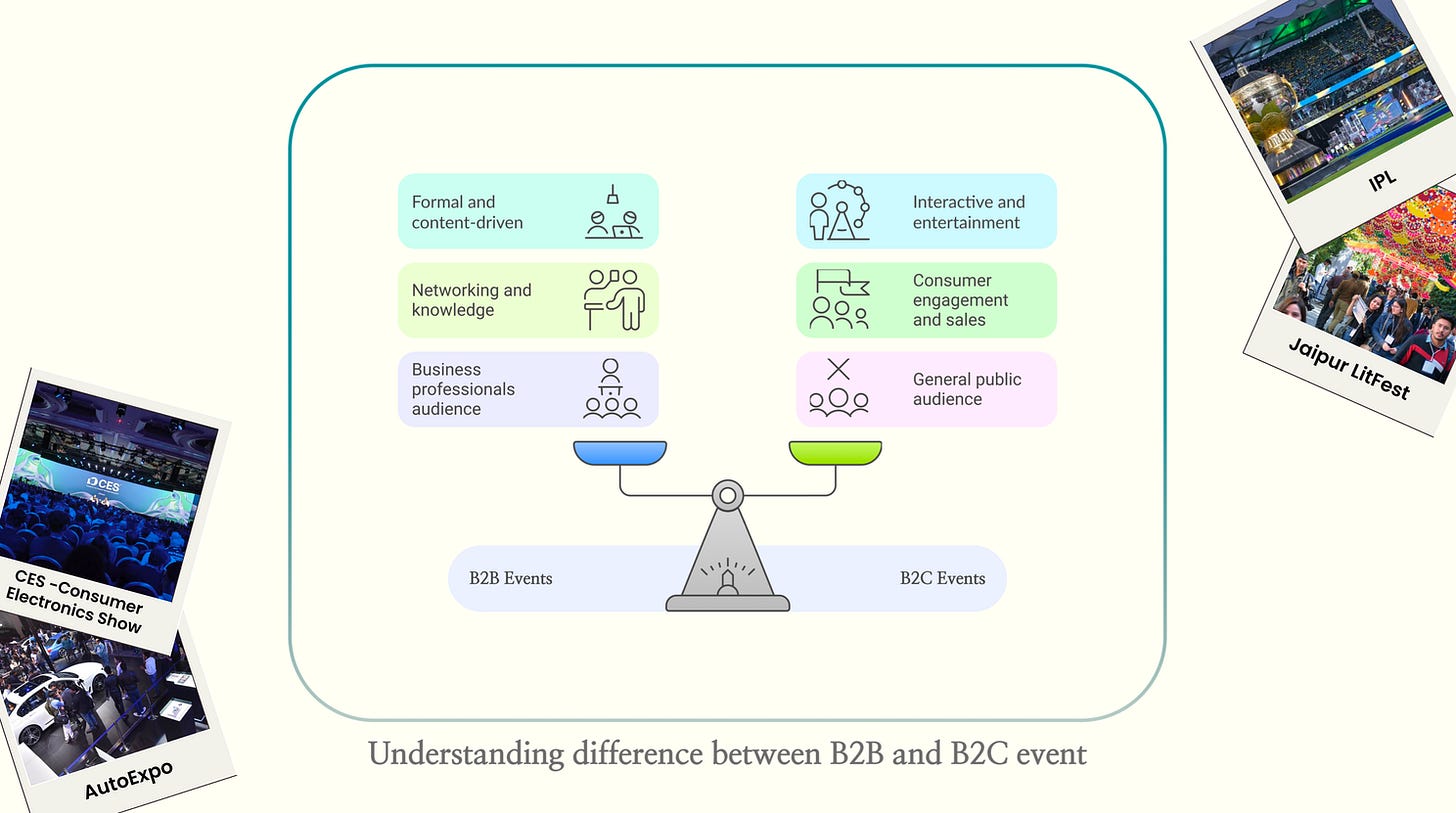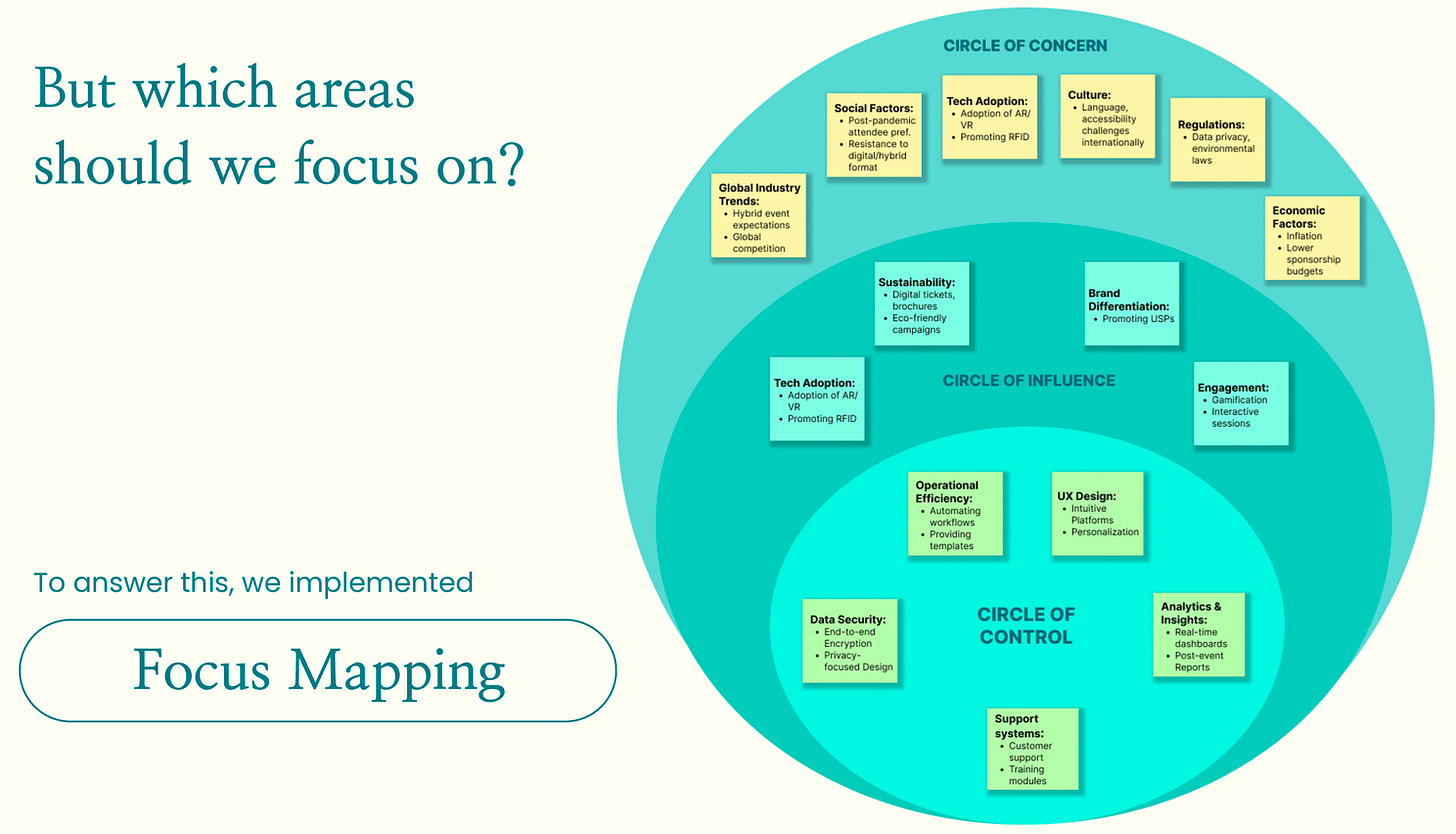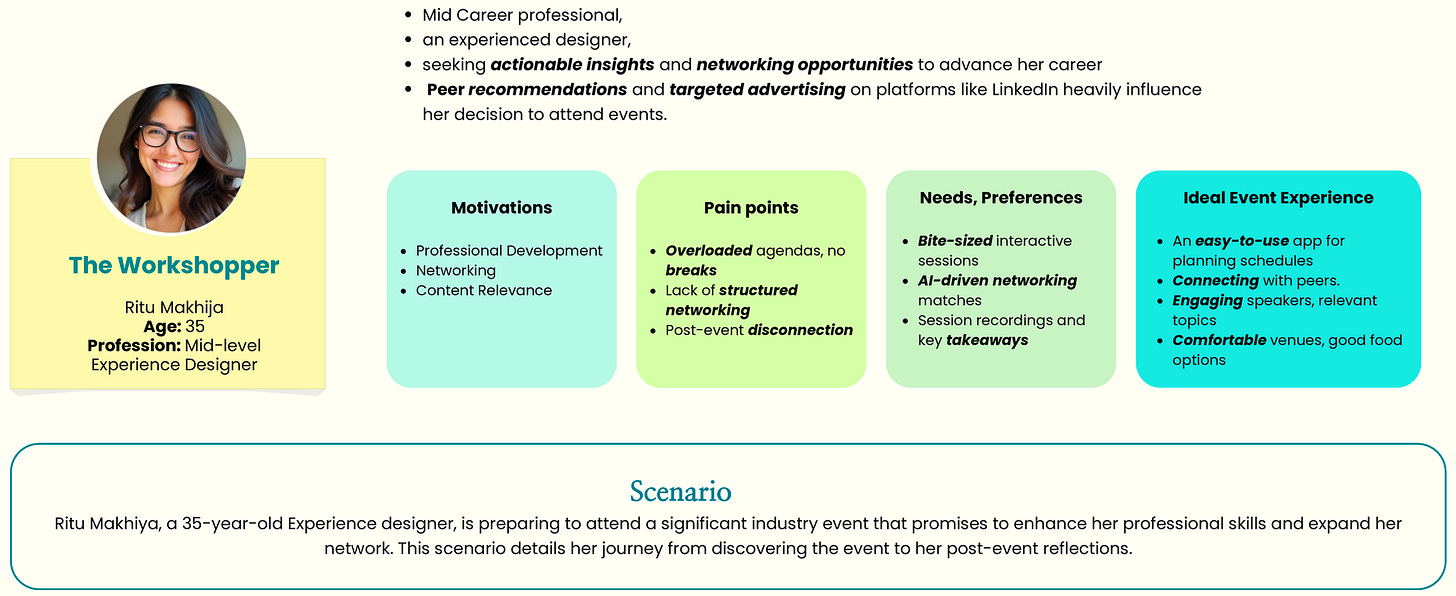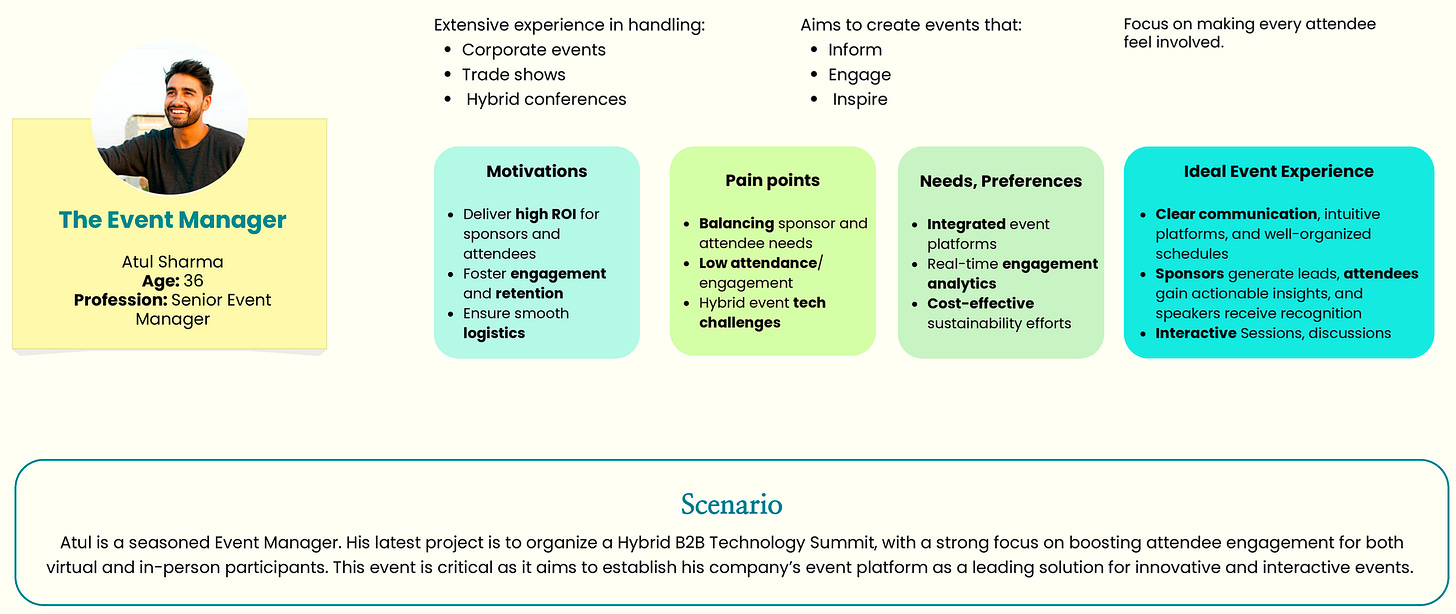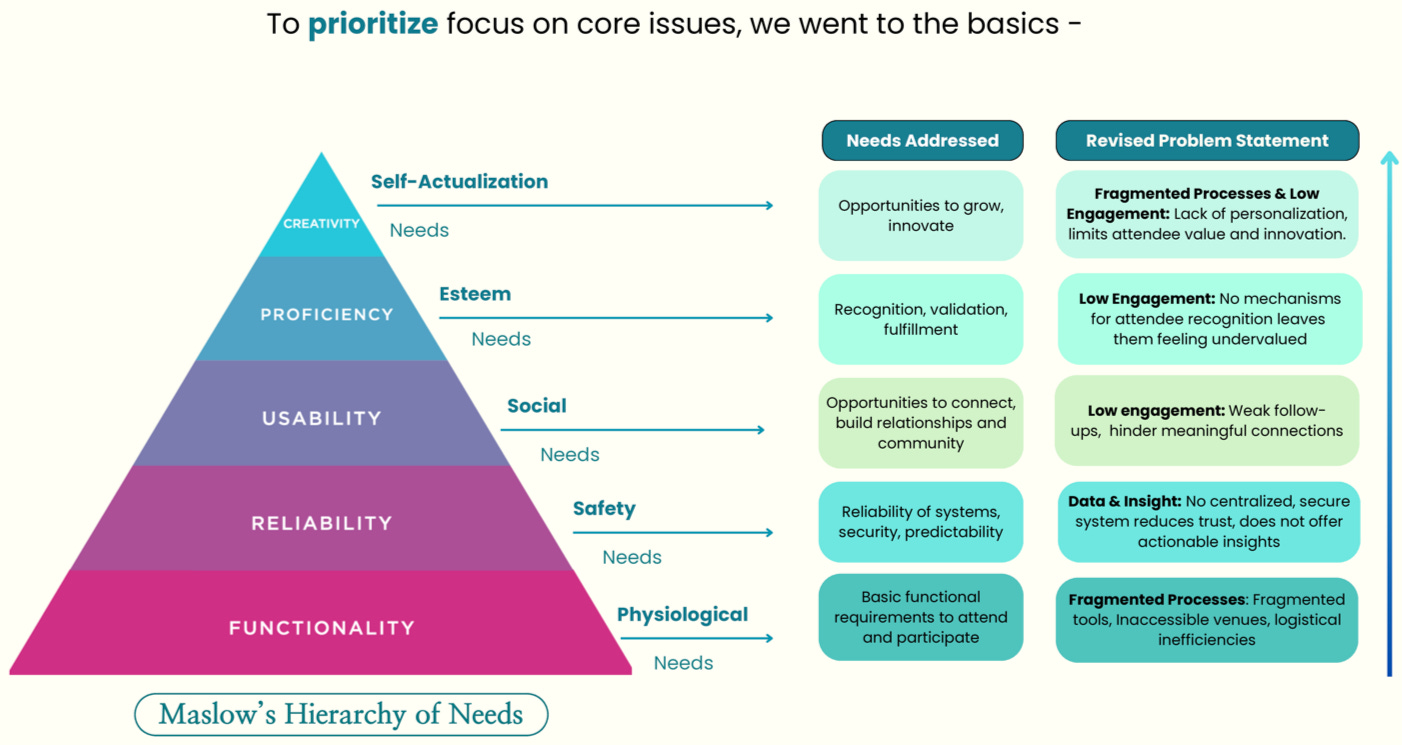Why B2B events need a makeover
This is part of F5.0 project brief
Think about the last event you attended. Was it exciting? Did it feel engaging and interactive, or was it just another rigid, formal gathering with long speeches and awkward networking sessions?
They both started with a simple question: How can we make B2B events better? Because, let us be honest, while these events are supposed to help businesses connect and grow, they often feel more like a chore than an opportunity. They wanted to turn these stiff, formal events into something exciting, engaging, and truly valuable for everyone involved. And trust me, their journey is as fascinating as it is important.
The big picture
B2B events are huge—by 2026, this industry is expected to hit $36.31 billion. That is a mind-blowing number! And 90% of organizers believe that big events will be hybrid (both online and in-person). But here is the kicker: Attendees do not really care much about all the tech bells and whistles. They measure success by one thing—business opportunities. If an event does not help them make meaningful connections, it is just noise.
So, the team set out to dig deeper. They identified three major challenges in B2B events:
Fragmented processes – Everything from marketing to engagement happens on different platforms, making things chaotic.
Low engagement – People tune out, get bored, and forget the event as soon as it is over.
Lack of useful data – Organizers do not have a clear way to measure whether their event was a hit or a miss.
Digging deeper
To tackle these challenges, Ragini and Abhinab followed a five-step process: understanding, researching, analyzing, mapping behaviors, and redefining the problem. They started by looking at B2B events with fresh eyes, asking: What’s missing? What could be better?
They discovered something surprising. When people talked about events in general, they used words like “fun,” “energetic,” and “memorable.” Think of events like the Jaipur Literature Festival or Figma’s Config conference—these are lively, engaging, and leave a lasting impression. But when it came to B2B events, the tone changed completely. Words like “formal,” “rigid,” and “overwhelming” came up. Ouch. Clearly, there was a gap between what B2B events could be and what they are.
B2B vs. B2C events
To understand this gap, the team compared B2B events to B2C (business-to-consumer) events. B2C events, like music festivals or product launches, are all about entertainment and consumer engagement.
They are fun, flashy, and designed to make you feel something. B2B events, on the other hand, are more formal and content-driven. They are about networking, learning, and business opportunities. But here is the thing: just because they are formal does not mean they have to be boring.
The evolution of B2B events
Our team took a step back to see how B2B events have evolved over time. From the Great Exhibition of 1851 to modern-day conferences, these events have shifted from being high-touch, in-person experiences to tech-driven, data-oriented ones. Today, trends like personalization, hybrid events, and sustainability are shaping the future of B2B events. But technology alone is not the answer. Attendees want real value—collaboration, education, trust-building, and meaningful interactions.
Why do people attend B2B events?
This was the million-dollar question. Our team found that people attend B2B events for reasons like career growth, networking, learning and even hiring talent. But here is the twist: all these needs could technically be met through other systems—like online courses or LinkedIn. So, what makes B2B events unique? The answer lies in their ability to offer targeted content, business development opportunities, and genuine networking. But right now, many events are falling short.
What is really going wrong?
Ragini and Abhinab looked at direct competitors like IITF and AutoExpo, as well as event management platforms like AirMeet and Cvent. What they found was not great. Events were often product-centric, with limited interactivity, expensive VIP packages, and poor cross-industry networking. Platforms, while feature-rich, struggled with technical glitches and required too much self-management. It was clear: B2B events needed a major overhaul.
Who is affected?
B2B events involve a complex ecosystem of stakeholders: event organizers, speakers, exhibitors, collaborators, and attendees. Each group has its own needs and pain points. For example:
Attendees want valuable experiences but often face overloaded agendas and poor networking opportunities.
Organizers want smooth execution but struggle with tech headaches and proving ROI.
Understanding these perspectives was crucial. Our team mapped out the relationships between stakeholders, revealing a web of challenges and expectations. It was clear that solving these issues required a holistic approach.
What did our team find?
Over many weeks, our team conducted surveys and interviews with 10 participants (5 attendees and 5 organizers). Their findings were eye-opening:
Networking is a priority: Both attendees and organizers want better-structured networking opportunities.
Tech friction: While technology is desired, it often creates more problems than it solves.
Expectation gap: Attendees focus on quality, while organizers focus on quantity.
Reflective motivation: Attendees need to see clear value to stay engaged.
They also created personas to represent key stakeholders. For example, Ritu Makija, a 35-year-old designer, attends events for professional development but is frustrated by overloaded agendas and poor networking.
On the other side, Atul Sharma, a seasoned event manager, wants to create engaging events but struggles with tech and data.
The emotional journey
Our team mapped out the emotional journey of both, attendees and organizers. Attendees go from curiosity during registration to stress and apprehension before the event. Organizers experience excitement during planning but anxiety during execution. Interestingly, their stress points often align—when attendees are frustrated, organizers are too.
The Aha moments
Some of the most fascinating insights came from what Ragini called “wow” and “aha” moments:
Wow moment: Everyone wants hybrid events, but organizers struggle to deliver them effectively.
Aha moment: Reflective motivation drives success—educational value plus speaker credibility equals attendance. But information overload can ruin even the best content.
The real problem
The final breakthrough came when the team reframed the challenge:
How can we transform B2B events from being purely transactional to becoming psychologically engaging experiences? In other words, how can we make these events not just informative, but meaningful and engaging?
They used two powerful behavioral science models to understand this problem:
Self-determination theory – B2B events fail because: Attendees lose autonomy with rigid schedules. Networking lacks real connection. Poor tools limit learning.
EAST framework – Engagement fails because: Processes are too complex. Generic incentives don’t excite. Delayed feedback isolates attendees.
They identified two key areas to focus on:
Conveying value: Attracting the right audience, reducing friction, and addressing overloaded agendas.
Engaging attendees: Creating interactive, valuable experiences during the event.
The bigger picture
B2B events are at a turning point. They have the potential to be so much more than just formal gatherings. By addressing these challenges, Ragini and Abhinab believe we can create events that inspire, connect, and deliver real value. It’s not just about making events better—it’s about making them matter.
So, what do you think? How would you redesign a B2B event to make it unforgettable? Ragini and Abhinab’s journey is just the beginning, and the possibilities are endless. Let’s make B2B events the highlight of everyone’s calendar—not just another item on the to-do list.



